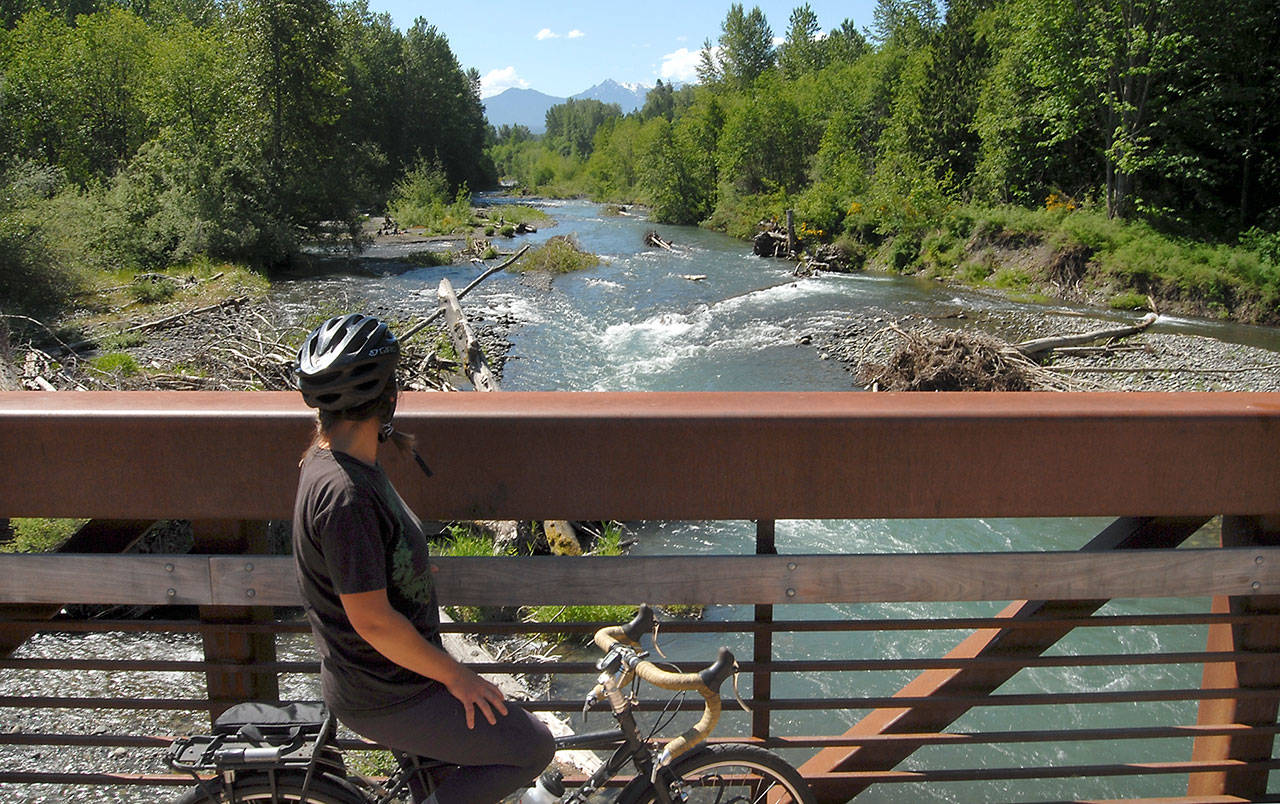The Olympic Mountains snowpack, the storage for most summer water supplies on the North Olympic Peninsula, is shrinking fast, raising fears of a drought this summer.
Not all water experts agree. Cliff Mass, University of Washington atmospheric sciences professor and Northwest weather expert, said that the state is not facing a drought.
Olympic Mountain snowpack was 22 percent of normal Saturday with three of four automated sensors melted out for the season, according to the U.S. Department of Agriculture.
That is after achieving close to normal snowpack mid-winter, when parts of the Peninsula lowlands were hit with more than a foot of snow in what has come to be termed the Port Angeles and Sequim “snowmageddon” of 2019.
“We’re melting out early,” said Scott Pattee, water supply specialist with the Natural Resources Conservation Service in Mount Vernon, on Wednesday.
“It’s pretty much done.”
Gov. Jay Inslee included water basins in both Clallam and Jefferson counties in an expansion of a drought emergency alert that covered most of the state.
The alert issued Monday was apparently prompted by a report from the Department of Agriculture’s Natural Resources Conservation Service that every water basin in the state is below the 30-year median for snowpack.
Pattee expects a dry summer, exacerbating the already slim water supply in the mountains.
But Mass expects a wetter-than-normal summer over much of the state and likened the governor’s drought declaration to crying wolf.
He said in his Thursday blog that the state is not facing a drought emergency, despite the fact that precipitation has been lower than normal in Western Washington.
“The bottom line: the situation is far less dire or unusual than advertised. There will be plenty of water for nearly all users, and that the forecast is for a wetter than normal summer,” Mass said.
So far, local officials have not seen much impact on water supplies — which is usual for this time of year.
The Jefferson County Public Utility District relies primarily upon underground sources for drinking water and so is not affected by drought in the same way as places that depend upon surface supplies, such as Port Townsend, said Will O’Donnell, spokesman.
Port Townsend draws water from the Big Quilcene River and through City Lake. Lord’s Lake is a reservoir used when needed.
“Everything is full at this point,” said Ian Jablonski, operations manager for water resources for the city. He cited recent rains and snow melt in saying that supplies are normal for May.
Historically, “we won’t know how critical the water situation is going to be until late summer or early fall,” Jablonski said.
“If the fall rains come early, we generally don’t have an issue. If they don’t come until November, we have a problem.”
In response to the governor’s declaration, the Clallam County Public Utility District issued on Thursday Stage 2 water alerts for the Upper Fairview, Clallam Bay/Sekiu and Island View water systems, three of its nine systems.
Stage 2 alerts ask customers to voluntarily cut water usage.
Upper Fairview includes customers south of the Deer Park Reservoir on Deer Park Road and south of the John Jacobs Road off O’Brien Road.
“The Department of Ecology expects warmer, drier weather,” said Nicole Clark, PUD spokeswoman in a press release issued Thursday.
The Clallam Bay/Sekiu system is served by a well field near the Hoko River and serves residents of Clallam Bay and Sekiu as well as the Middle Point area and the Clallam Bay Corrections Center.
“Groundwater sources do have a greater resiliency to drought compared to surface water sources; however, streamflow is used as an indicator of upcoming groundwater shortages in this region,” Clark said.
The Island View system is about 10 miles west of Sekiu and serves 33 customers.
The city of Sequim also has urged residents to conserve water.
“Precipitation has been remarkably below normal in parts of western Washington,” city officials said in a press release issued Friday.
“The total February to April precipitation averaged over the western Olympic Peninsula ranked as the third driest since 1895 with about a 13.5-inch deficit compared to normal.”
Port Angeles city officials are keeping a close eye on Elwha River volumes, which are now adequate, said Marian Bodart, administrative support supervisor for the city’s Pubic Works department.
“We anticipate recommending a Stage 1 water shortage to the City Council in June,” she said in a Friday email. “This will prompt all city departments to prepare for a possible future water shortage.
If river flows decline as predicted, it may be necessary for the city to begin secondary drought contingency actions,” she added.
Such action could be considered as early as July or August.
The governor’s drought emergency declaration allows expedited emergency water right permitting and gives the state the ability to address drought hardships, the governor’s office said.
The governor declared drought in the Methow, Okanogan and Upper Yakima basins in April. He added 24 more basins this month.
Among them are Elwha-Dungeness watershed, Lyre-Hoko, Queets-Quinault, Quilcene-Snow, Skokomish-Dosewallips, Sol Duc — all on the Peninsula.
Others are Chelan, Colville, Cowlitz, Deschutes, Entiat, Grays-Elochoman, Kennedy-Goldsborough, Kettle, Lower Chehalis, Lower Skagit-Samish, Lower Yakima, Naches, Nooksack, Stillaguamish, Upper Chehalis, Upper Skagit, Wenatchee, and Willapa.
Seattle, Tacoma and Everett areas are not included in the declaration.
________
Executive Editor Leah Leach can be reached at 360-417-3530 or at lleach@peninsuladailynews.com.
Reporter Rob Ollikainen and Assistant Managing Editor Mark Swanson contributed to this story.

